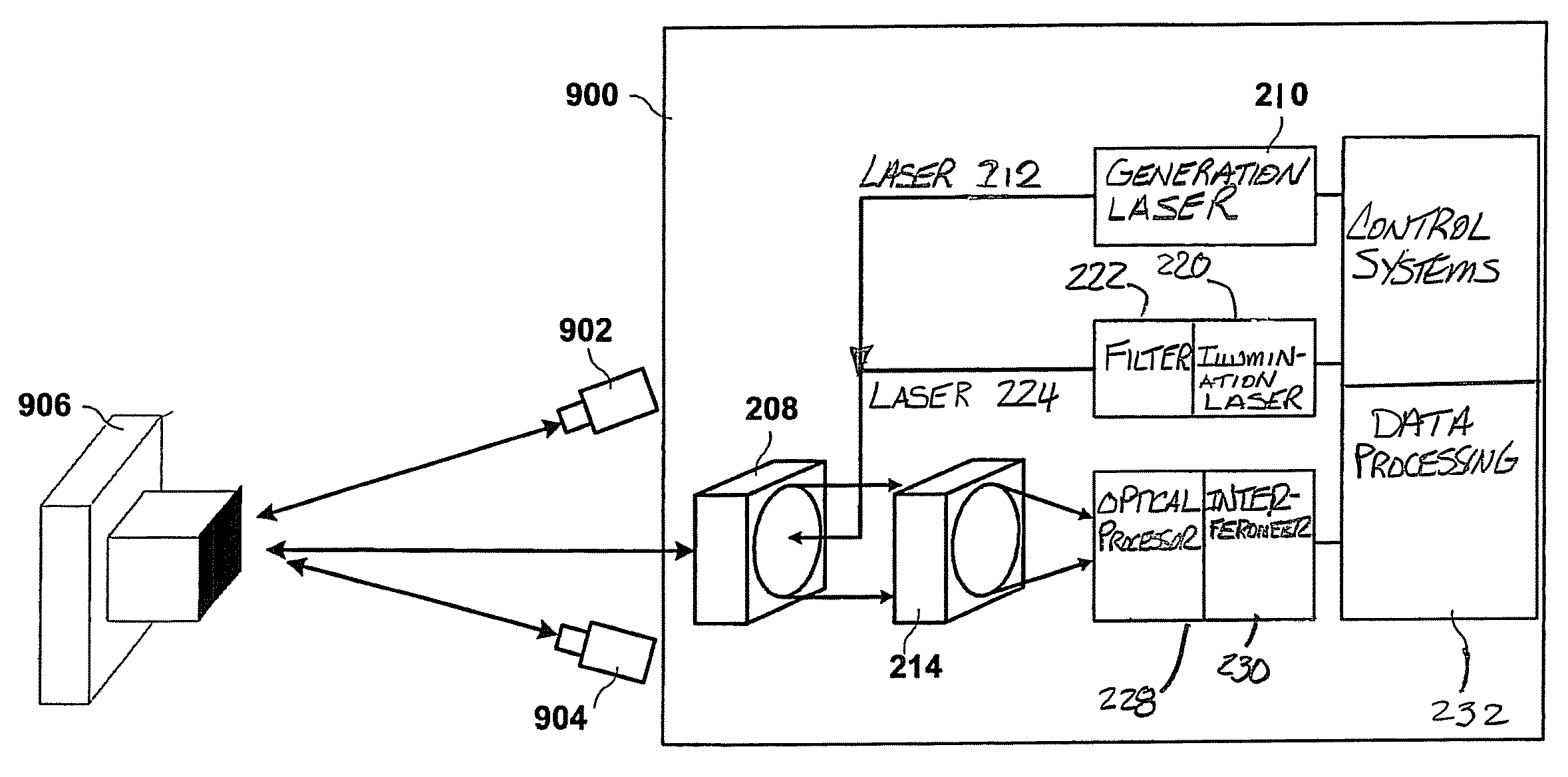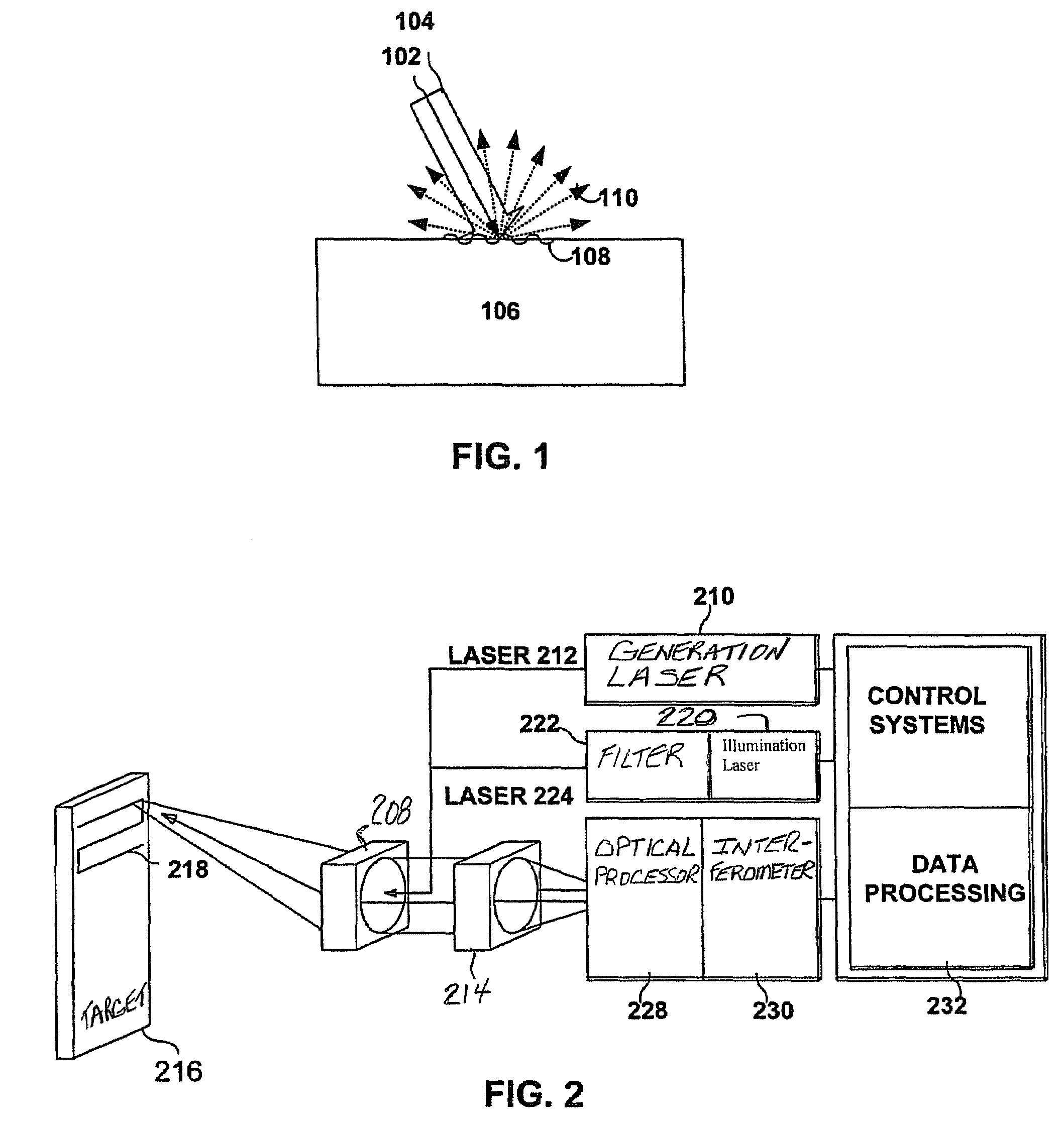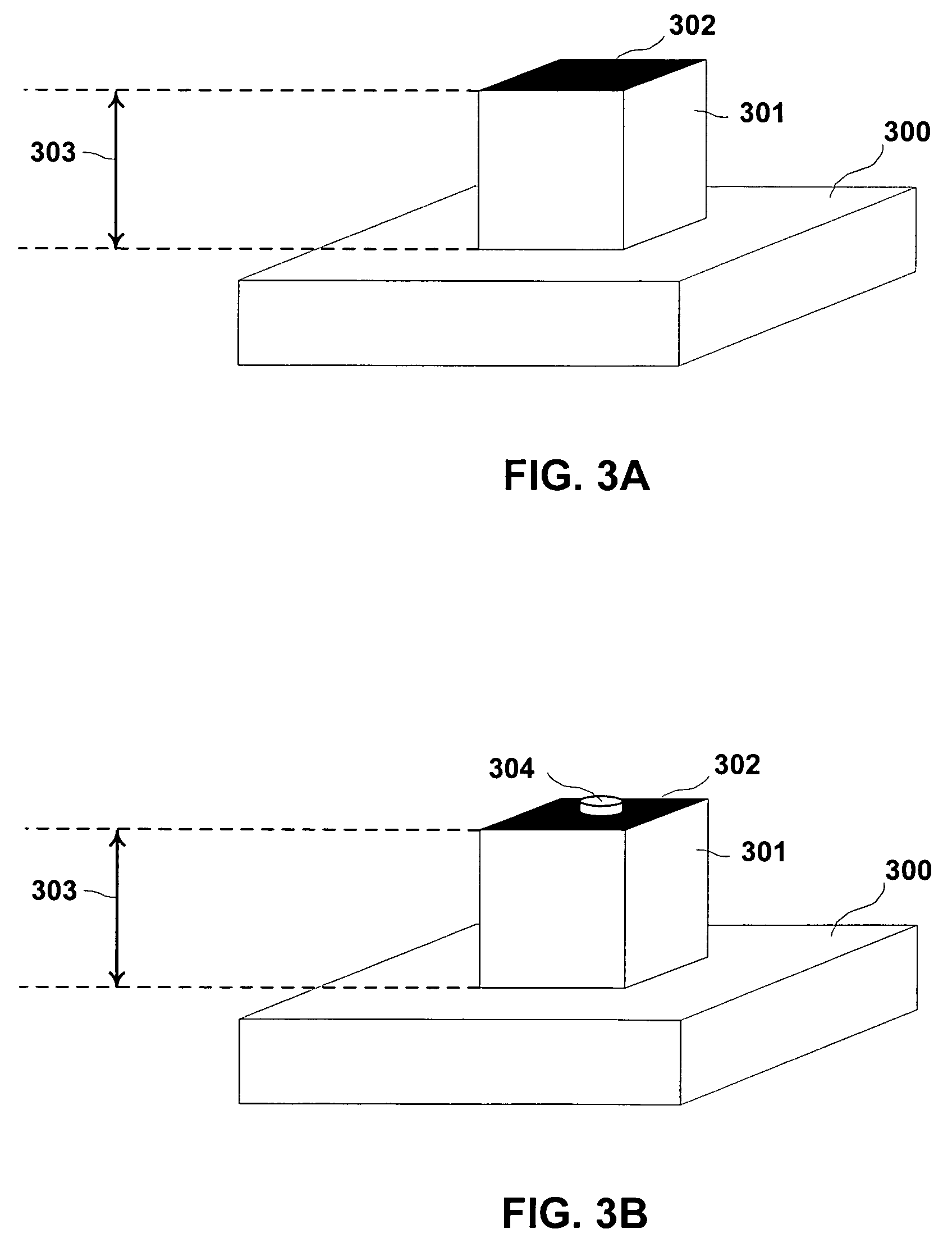System and method to calibrate multiple sensors
a technology of sensors and sensors, applied in the field of inspection sensors, can solve the problems of adversely increasing the manufacturing cost of composite structures, affecting the efficiency of inspection sensors, and single-mode targets designed to work for one optical sensor, and achieves the effects of improving overall system efficiency, saving time, and ensuring accuracy
- Summary
- Abstract
- Description
- Claims
- Application Information
AI Technical Summary
Benefits of technology
Problems solved by technology
Method used
Image
Examples
Embodiment Construction
[0026]Preferred embodiments of the present invention are illustrated in the FIGs., like numerals being used to refer to like and corresponding parts of the various drawings.
[0027]The present invention provides the ability to use the single multi-mode calibration target to calibrate multiple sensor devices. This multi-mode calibration target may be viewed by sensors such as optical cameras and depth cameras. The multi-mode calibration target may also be used to calibrate ultrasonic sensors. Contrasting colors allow cameras sensitive to visible light to see the target. Additionally, the target may also include depth discontinuities on the surfaces. To calibrate the ultrasonic sensors other discontinuities may be included within the target. For example, discontinuities in density, texture, composition may be used. By having contrasting colors and depth discontinuities on the same target, different visualization or ultrasonic devices may be calibrated or aligned based on the exact same ...
PUM
| Property | Measurement | Unit |
|---|---|---|
| wavelength | aaaaa | aaaaa |
| power | aaaaa | aaaaa |
| ultrasonic surface displacements | aaaaa | aaaaa |
Abstract
Description
Claims
Application Information
 Login to View More
Login to View More - R&D
- Intellectual Property
- Life Sciences
- Materials
- Tech Scout
- Unparalleled Data Quality
- Higher Quality Content
- 60% Fewer Hallucinations
Browse by: Latest US Patents, China's latest patents, Technical Efficacy Thesaurus, Application Domain, Technology Topic, Popular Technical Reports.
© 2025 PatSnap. All rights reserved.Legal|Privacy policy|Modern Slavery Act Transparency Statement|Sitemap|About US| Contact US: help@patsnap.com



